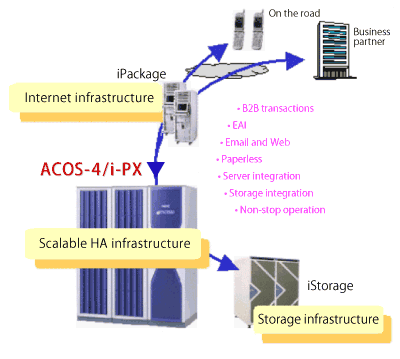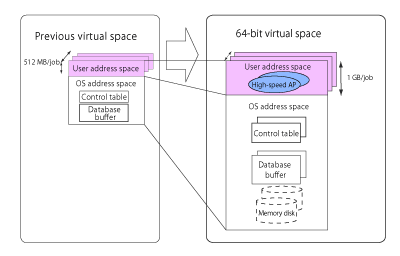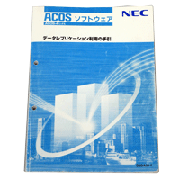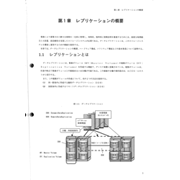ACOS-4/i-PX (which stood for “internet − parallel extended”) was an operating system designed for NEC’s mid-range and large mainframes. NEC announced and began shipping the operating system in November 2000.
ACOS-4/i-PX was developed for enterprises to expand into full-fledged Internet businesses by harnessing the Internet to more effectively use corporate information assets accumulated on mainframes. ACOS-4/i-PX provided scalable HA infrastructure, which made use of the latest Parallel ACOS system hardware technology and ensured continued future expandability, storage infrastructure, which offered new solutions to data usage, and Internet infrastructure, which seamless connected the system with the Internet. The operating system was installed on the i-PX7600 Parallel ACOS system, announced in November 2000, and the i-PX7800, announced in June 2001.
The main features of the operating system and its new architecture are detailed below.






